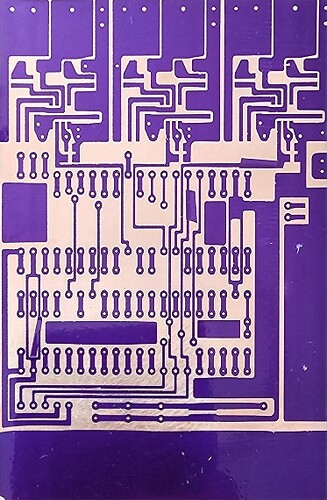I’m about to receive my 5 dollar order on ebay for a bldc motor from china tomorrow. And to get ready for the big event, I am researching what I can do with it. I had built a laser cutter that is completely 3D printed called the plaser (pla + laser) laser cutter. The innovation is on the x axis carraige, which rides on top so I can use the bottom for a aluminum bar bed integrated with the extrusions. This gives the illusion of being a complete machine, compared to the table top laser cutters that don’t have an encloser. So I came across the fact that BLDC motors are more suited for the task of a laser cutter than stepper motors. I mean steppers are for CNC work, where holding torque is optimized. But BLDC motors can do the same thing but faster, with less noise, and higher torque at higher speed. Plus you never miss a step!
I thought my Plaser cutter was a revolutionary design for the poor makers in the community. If you need a larger format machine, there isn’t any available in standard table top format. But nobody has of yet shelled out 50$ for the design. oh well. I know now I will reap that 50$ from someone out there, cause I am determined to make (or let someone else make) the FOCplaser, which I imaged can go for super high speed scans and cause people to swell with jealousy. But I’m not really sure what it looks like yet. Can you use the FOC board to drive BLDC motors with step signals? The whole point of the 3D printed part was for the lowest cost machine for the capable maker. Being as I can cnc pcb’s, limited to through hole technology, what would be the simplest solution to controlling 3-4 bldc’s (2 of which go in sync on the x axis).
Hello. Yesterday I tried using my photopolymer printer. The speed is very fast, 30 seconds. The same disadvantage with vias. But very quiet operation, almost silent))))
SimpleFOC has the “StepDirListener” as input, I have used it with great success, but never tested the max achieveable speed. It’s a direct drive extruder.
I wouldn’t recommend the AS5600 magnetic sensor for high speed, but AS5408A will do.
For raster engraving only the x-axis needs to be fast. How fast depends on your laser power.
With a BLDC motor you’d need a bit more overscan at the turningpoints, because the position control is not so stiff as with a stepper.
The sFOC-mini is good for upto 2.5A. The 2805 kV140 motor and mini-driver for my extruder only got warm. So I guess a bigger motor with higher kV rating will work as well.
Drilling those THT holes won’t be fun. Some don’t have enough land around the holes.
Well, in your opinion, do you think BLDC motors are better than steppers for a laser cutter? Cause its not like a CNC or even a 3D printer.
I’m still trying to picture this machine in my head. So with these motors they will not turn off a given spot, so the y axis will never be misaligned. Will I even need limit switches? You just set a machine zero point and it’ll never loose that position.
They might be better… technology wise the right BLDC with sensor and closed loop control is certainly superior to a simple stepper, but it’s also a lot more expensive, and more complex to control…
So I think you have to define “better” a little more precisely because as almost always in engineering it’s really a trade-off…
Yes! You could choose a zero after startup, and the machine would always be able to find it, if we assume there is no mechanical slippage.
But I think you still want end-stops in order to know the limits of your axes. Without them the machine might “hit the walls” if the user sends commands that take it beyond the limits…
I built a laser cutter once, a lasersaur. I’ve also built quite a number of other similar machines like a torch table. To have one piece and ask what you can do with it is very much a foolish approach… There is a lot more to it than that. Also stepper motors actually work really well.
Just have some fun with it and learn about motor drive and electronics, you could build a fan or something, that’s sensible. I know a couple guys that are trying to build 3d printable fans, centrifugal fans, axial fans. There is a lot of room for improvement and a lot of potential.

